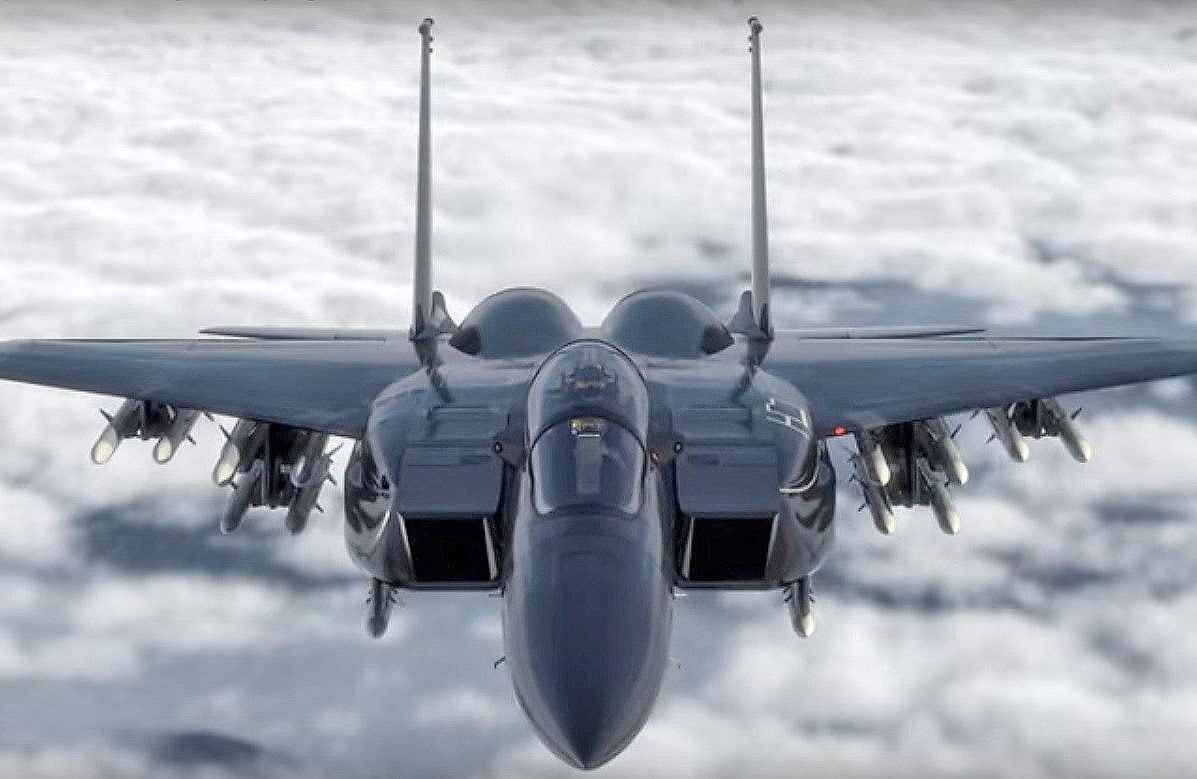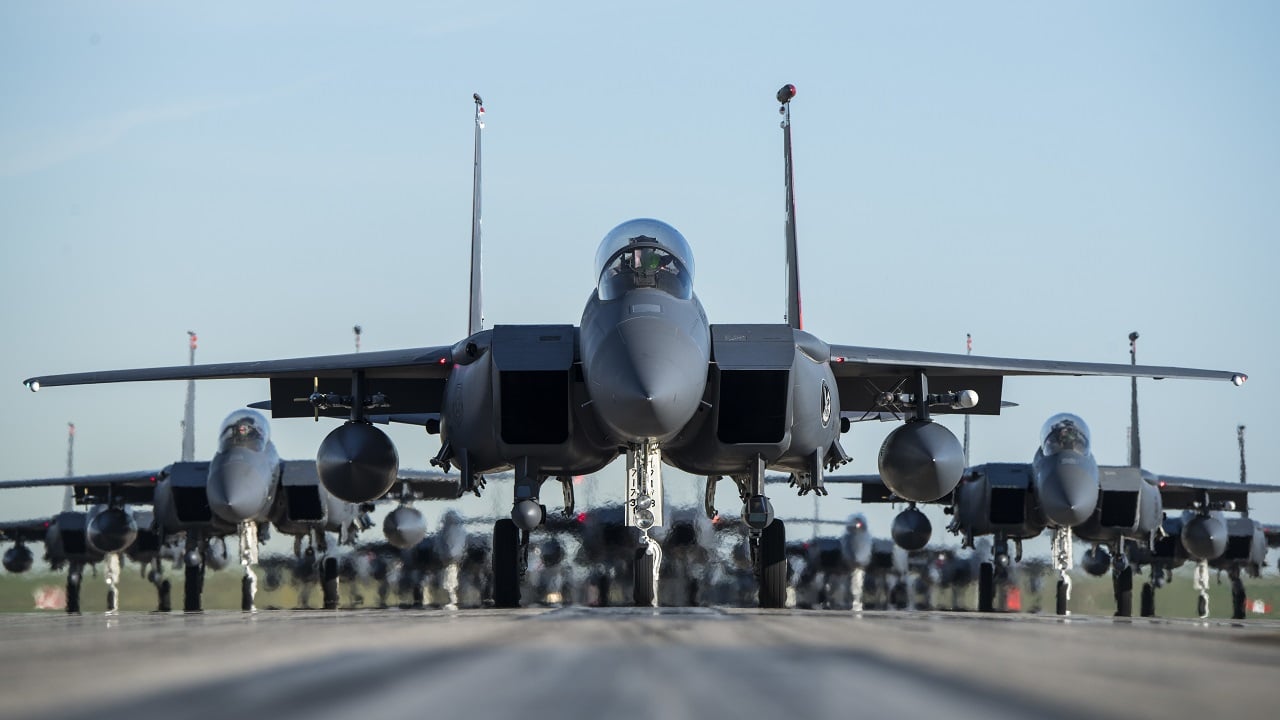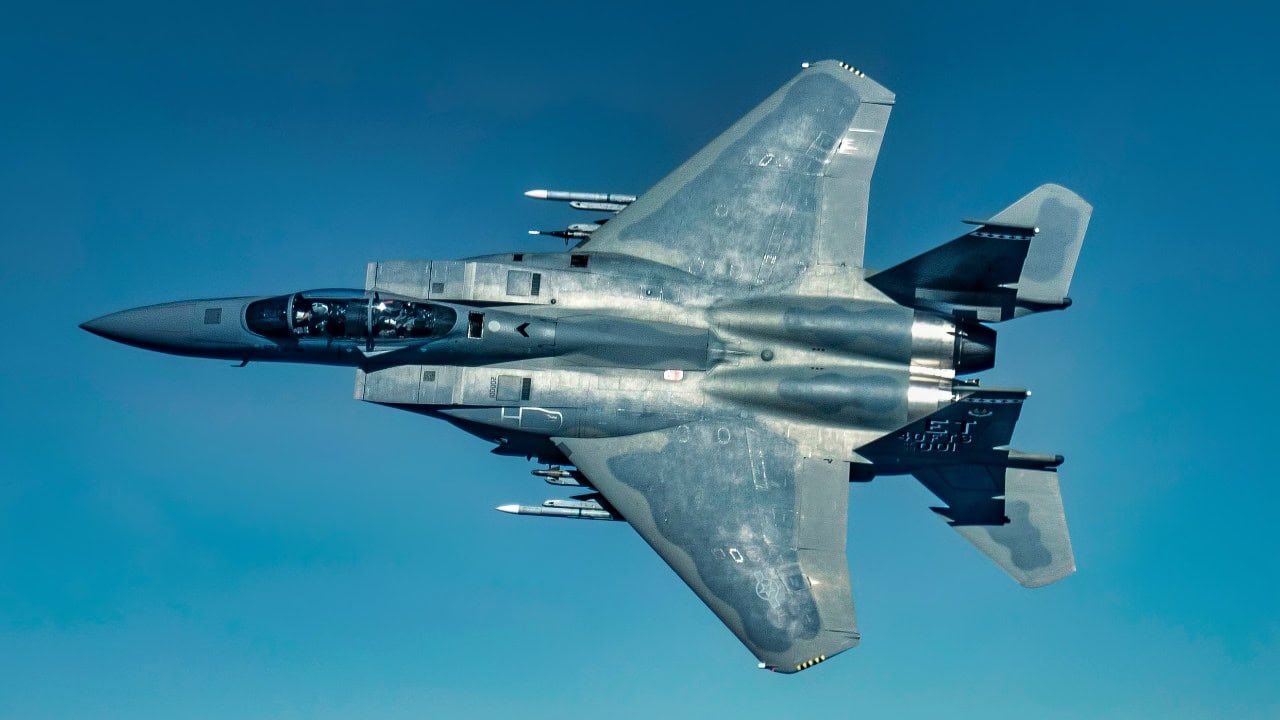Article Summary – South Korea’s F-15K “Slam Eagle” is far more than a rebadged U.S. F-15E. Reengineered around the peninsula’s unique threat environment, it combines a heavy payload, long range, and tailored avionics to hit hardened bunkers, underground sites, and maritime targets from standoff distance.
-Built with deep Korean industry involvement and powered by GE F110 engines, the jet integrates Taurus cruise missiles, Korean smart munitions, and surface-search–optimized radar for Sea of Japan and Yellow Sea patrols.

F-15K Image: Creative Commons.
-Two decades on, an ongoing modernization program keeps the F-15K at the heart of Seoul’s deterrent as one of the world’s most capable non-stealth fighters.
South Korea’s F-15K Slam Eagle Is Something Else
South Korea operates one of the most distinctive fighter fleets in Asia, and at its center is an aircraft that many outside the region overlook: the F-15K “Slam Eagle.”
Based on the U.S. F-15E Strike Eagle but heavily modified for Korea’s threat environment, the F-15K has become the Republic of Korea Air Force’s (ROKAF) primary heavy-strike platform – and it’s obvious why.
The F-15K is capable of carrying large weapons loads, conducting deep-penetration missions, and performing maritime strike operations across the peninsula and surrounding seas.
As tensions with North Korea rise and joint U.S.-ROK air drills intensify, the jet has returned to the spotlight. And what makes the F-15K so notable and interesting is not simply that it’s a variant of a proven American design – there are, after all, many variants of American aircraft dotted all over the globe – but that it is one of the most customized and capable versions of the F-15 family anywhere.
The aircraft was engineered from the start to meet South Korea’s particular security needs, and today it remains one of the most powerful non-stealth fighters in service in the region.
What It Is and Why It Exists
When South Korea launched its FX fighter competition in the early 2000s, the country was looking for much more than a standard multirole jet.
Seoul sought to replace its aging fighter fleet and improve both deterrence and air-strike capabilities. It needed an aircraft that could fly long distances across the peninsula, strike hardened targets deep inside North Korea, pose a risk to underground facilities, and help defend the country’s coastlines against maritime threats.

F-15E Strike Eagles taxi into formation June 12, 2019, at Mountain Home Air Force Base, Idaho. This was a rare opportunity to capture the Gunfighter family, including the 391st, 389th and 428th Fighter Squadrons, before a morning flight. (U.S. Air Force photo by Staff Sergeant Jeremy L. Mosier)
The ROKAF needed something particular: a heavy, flexible platform that could handle the full spectrum of missions that South Korea would throw at it. And that’s precisely what they got.
Boeing’s proposal, based on the F-15E Strike Eagle, was significantly reconfigured to meet Korean requirements and was officially awarded the contract in 2002.
What came out of that deal was much more than a new export model; it was the beginning of what comes close to being an entirely new aircraft that simply looks similar to the original platform.
Production of the aircraft included extensive participation and influence from Korean companies which built key structures, avionics components, and subsystems under wide-spanning agreements with the United States. Even the choice of engines was interesting: South Korea chose General Electric F110s instead of the Pratt & Whitney powerplants that were typical of U.S. variants. The reason? Higher thrust and simplified logistics.
And it was precisely these kinds of early decisions that set the tone for everything that followed. The F-15K was designed from the beginning as a strike aircraft capable of seamlessly transitioning between air-to-air combat, deep-penetration missions, and anti-ship operations.
To achieve this, the aircraft was given a heavier airframe for heavier payloads, a more sophisticated terrain-following radar capable of handling Korea’s mountainous terrain, and a new mission systems suite that combined American sensors with Korean datalinks.
The design choices produced something remarkable: a platform that effectively bridged two completely different ecosystems and gave South Korea far more autonomy than most foreign operators of American aircraft.
And it didn’t end there. Over the next two decades, the concept continued to grow, allowing ROKAF to tailor the Slam Eagle even further.
As tensions with the North grew and technology advanced, Seoul added new standoff weapons and upgraded mission computers. It began work on a comprehensive mid-life modernization program that makes the jet comparable to the newest F-15EX models.

U.S. Air Force Lt. Col. Richard Turner, 40th Flight Test Squadron commander flies 40 FLTS Senior Enlisted Leader, MSgt Tristan McIntire during a test sortie in the F-15EX Eagle II over the Gulf of Mexico on Jun. 14, 2022. Assigned to the 96th Test Wing at Eglin Air Force Base, Fla., the F-15EX Eagle II is the Air Force’s newest 4th generation fighter being tested at the 40 FLTS. (U.S. Air Force photo by Tech. Sgt. John McRell)

F-15EX Eagle II from U.S. Air Force
So, what started as an adaptation of the Strike Eagle has, in effect, formed into a uniquely Korean aircraft shaped by the realities of Korea’s threat environment – powered by the United States.
Why it’s the Most Unique Eagle In Service
The F-15K’s uniqueness is best seen in its loadout (equipment, supplies, and ordnance) and missions. Few fighters anywhere in the world carry the mix of weapons and sensors fielded by ROKAF’s custom Slam Eagles.
The aircraft can deploy heavy bunker-busting bombs to take out hardened targets, long-range standoff cruise missiles for precision strikes, and a wide array of Korean-developed glide bombs and guided munitions.
One of the F-15K’s signature capabilities – the integration of the Taurus KEPD 350 cruise missile – gives Seoul the ability to hit strategic targets from hundreds of kilometers away without entering heavily defended areas.
And with that kind of deep-strike flexibility, it’s no wonder the aircraft remains central to South Korea’s deterrence posture to this day.
And then there’s the jet’s maritime role, which is just as distinctive.
Unlike American F-15E models, the Slam Eagle was designed to patrol the Sea of Japan and Yellow Sea, carrying anti-ship weapons and using radar optimized for surface search and tracking.
Those features allow the F-15K to seamlessly transition between air and sea missions, which are all essential for a country whose vulnerabilities are pretty equal across all three domains.
Two decades after entering service, it is still the heaviest-armed and most curious F-15 in the world – and the only one tailored to a single peninsula’s unique geography.
About the Author:
Jack Buckby is a British author, counter-extremism researcher, and journalist based in New York. Reporting on the U.K., Europe, and the U.S., he works to analyze and understand left-wing and right-wing radicalization, and reports on Western governments’ approaches to the pressing issues of today. His books and research papers explore these themes and propose pragmatic solutions to our increasingly polarized society. His latest book is The Truth Teller: RFK Jr. and the Case for a Post-Partisan Presidency.

